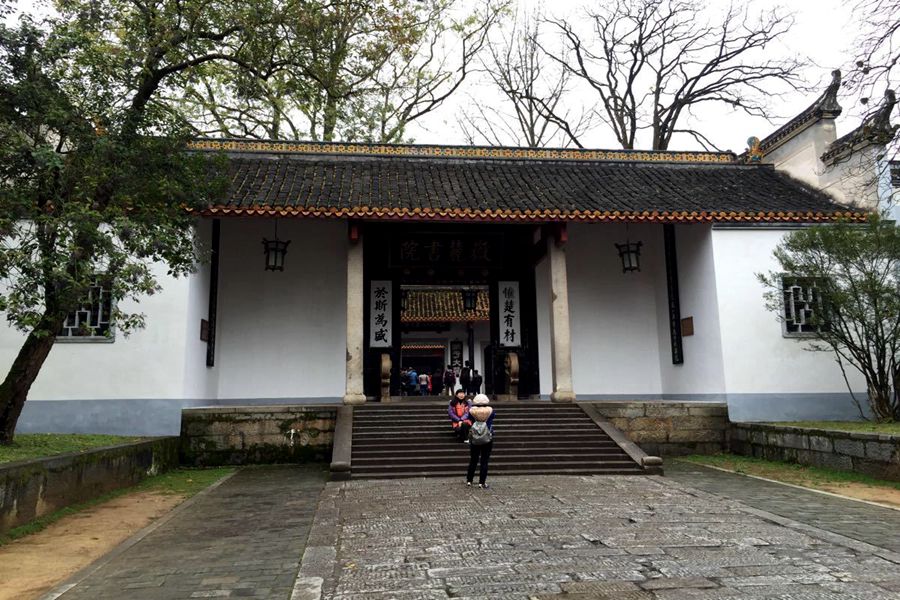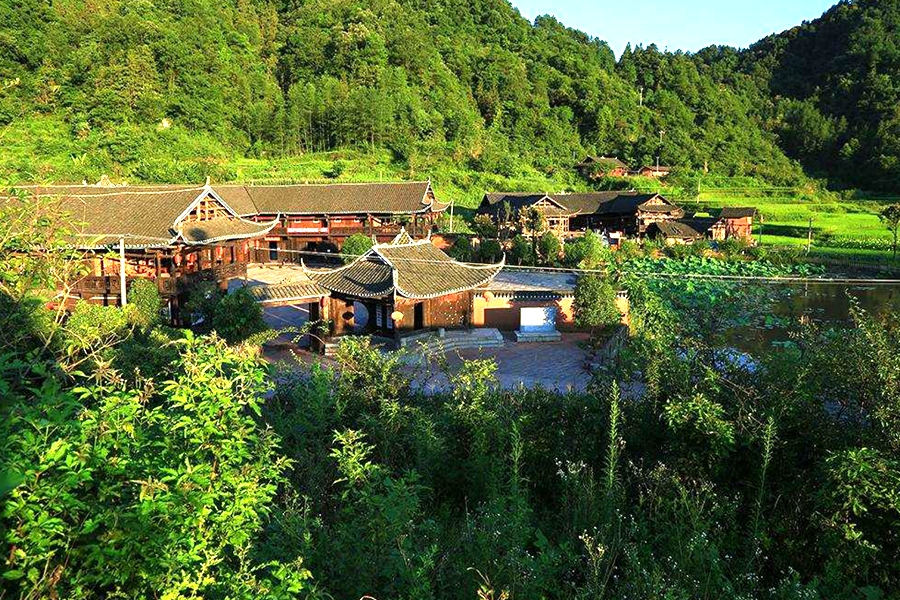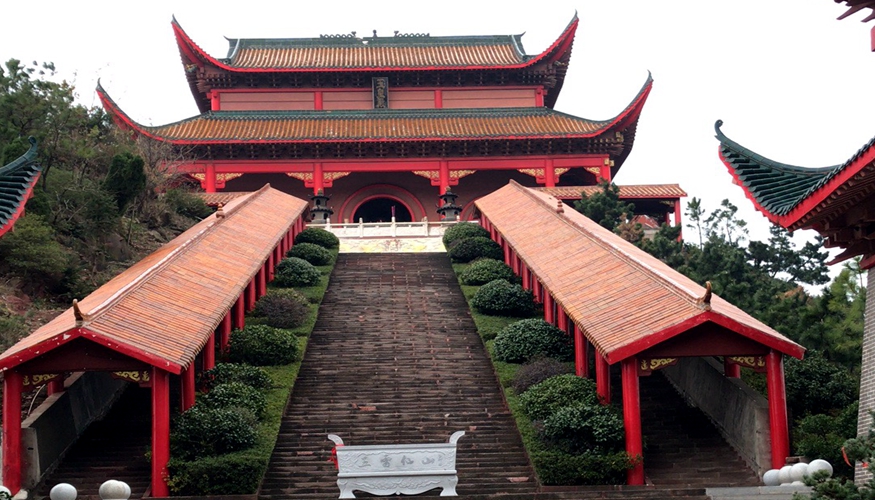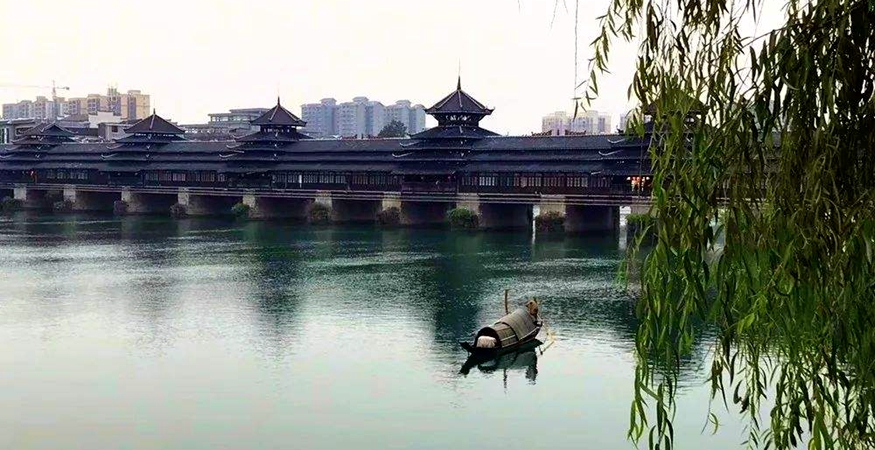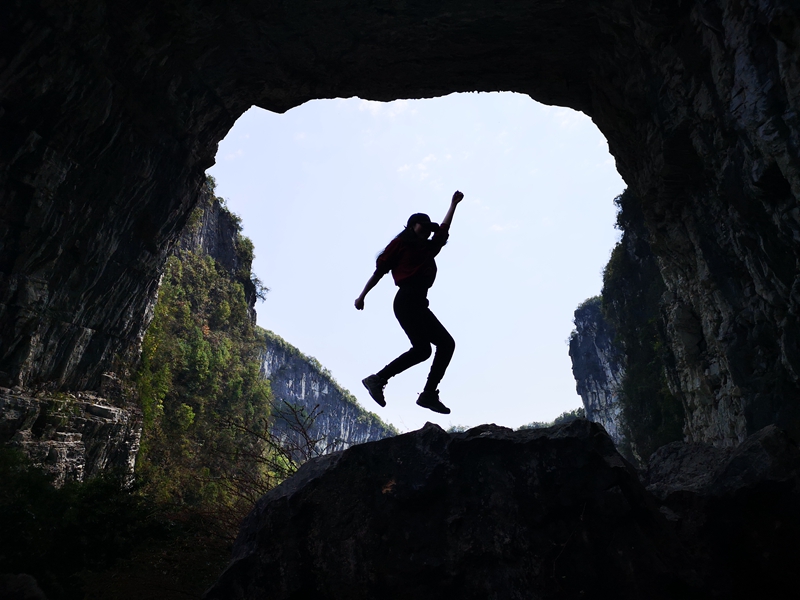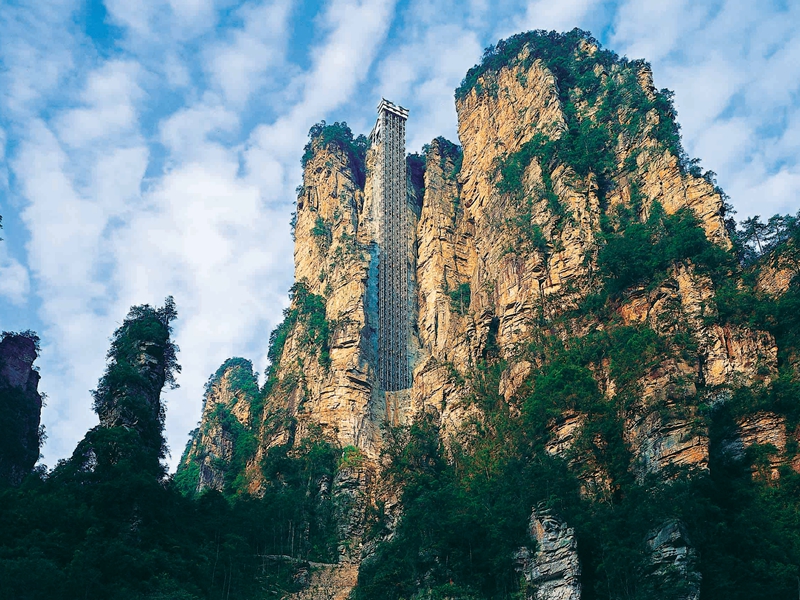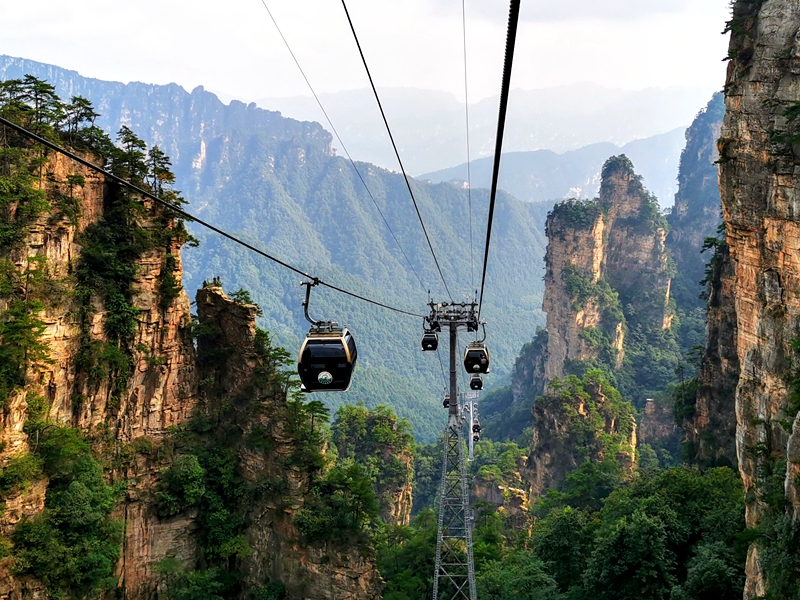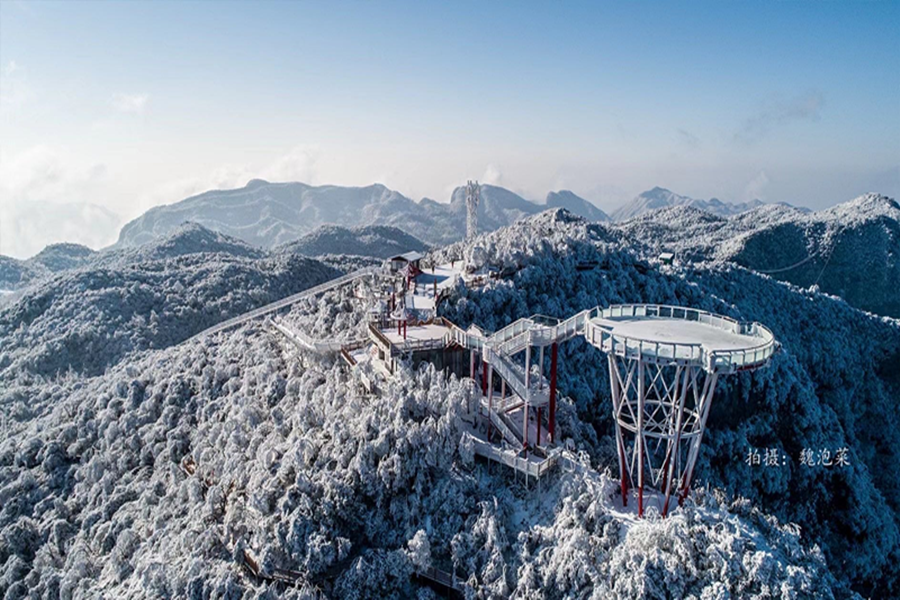
Yuelu Academy
Yuelu Academy can be traced back to the scholastic institution established by Zhi Xuan, a learned Buddhist monk at the end of the Tang dynasty(618-907). Believing that the improvement in the then morals lay in the revival of Confucianism, he had classics bought in the capital and houses built at the foot of Mt. Yuelu, providing a quiet refuge for scholars. In 976, or 16 years after the founding of the Song dynasty, Zhu Dong, magistrate of Tanzhou City, ordered the construction of more buildings here and turned it into Yuelu Academy. Supported by the local authorities, the school developed quickly and soon attracted a large number of scholars. In 999. Li Yunze, magistrate of Tanzhou City, set aside fields for the school supplying a steady source of funds. Two years later, he ordered more commentaries on Confucianism from the then ministry of education. This was the first time that this academy had gained impeal recognition.In 1012, Zhou Shi became the first recorded director of Yuelu Academy. He wrote several masterpieces on classic learning, including”Corrections of mao’s Exegesis to The Classic of Poetry a recension in eight volumes)and”A Critical Study of Collected Commentaries on The Analects of Confucius”( a treatise in ten volumes). His great achievements in running the academy drew much attention from the imperial court. In 1015, Emperor Zhenzong awarded the academy many copies of imperial classics and the marble tablet inscribed with” Yuelu Academy”in His Majesty,s own hand-writing.Thereupon, the academy became known to all and attracted students from all over the country.In the mid-11th century, Yuelu Academy developed into the highest educational institution in Hunan, enjoying superonity to Tanzhou Prefectural Academy and Xiangxi Academy, which were both founded in the then waves of establishing official schools. In the following two centuries, it continued to have a good reputation, while the other three of the four famous academies in the early ong dynasty gradually degenerated into obscurity.
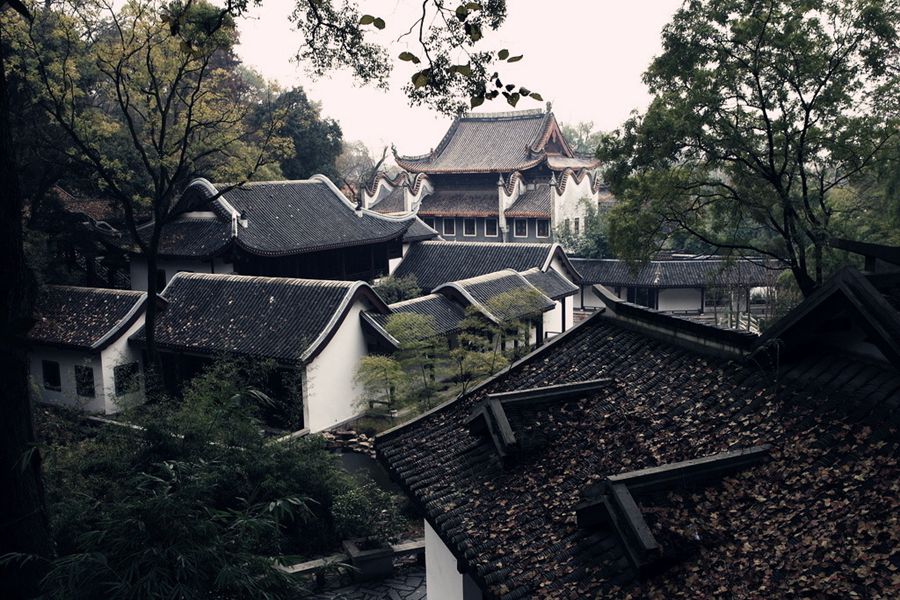
In the Southern Song dynasty (1127-1279), it became the cradle of Huxiang( Hunan school of learning, with Hu Hong(1106-1162)and Zhang Shi (1133–1180) as its representative figures. It had its heyday when Zhu Xi(1130-1200), a preeminent idealist philosopher and director of White Deer Cave Academy in Jiangxi Province, joined Zhang Shi and his disciples. The inspiring lectures they gave Jointly attracted hundreds of learners, which gave rise to the saying of only 300 Taoists in monasteries, but 1, 000 students at the Academy.In 1275, when Yuan soldiers were to besiege Tanzhou( now Changsha), students of Yuelu and Xiangxi academies withdrew into the city proper and went on with their studies. In the nick of time they joined in the battles, and 90% of them got killed.Their patriotism evoked widespread admiration and respect, as is revealed in A History of the Song Dynasty, Records of the Song and Yuan Scholars and A General History of China. Quite fortu-nately, Yuan(1206-1368) conquerors didn’t leave it abandoned, but had it restored in 1286 and 1314 respectively so that it became a model for other institutions to learn from.
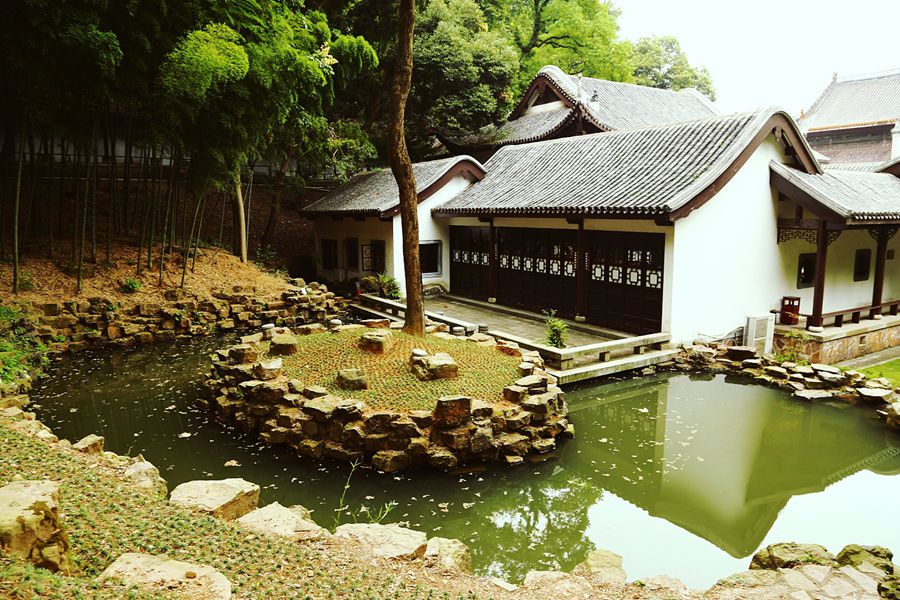
In the Ming dynasty(1368–1644) the academy, renovated over 20 times, boasted a play ground for martial training, 2 guest-houses to accomodate visiting scholars, 3 auditoriums, 4 living quarters, 6 dormitories, as well as pavilions, terraces, towers, verandas, archways, memorial halls and temples. The campus stretched from the foot of Mount Yuelu all the way to the west bank of the Xiang covering a total area of 10 square miles. And the construction of the Temple to Confucius the Memorial to Zhu Xi and Zhang Shi and the Memorial to 6 Donators was a sure sign of the then people s admiration for Scholastic pioneers For its long history, large scale and considerable enrollment, Yuelu Academy was designated as the provincial institution of higher ation in the Qing dynasty(1616-1911). Since its directors were mostly nationwide known scholars, it attracted learners from many provinces, many of whom staved here never to return Most remarkably, it received 18 collections of imperial books from Emperor Kangxi in 1686 and had the Imperial Library built just at the foot of Mt. Yuelu. Thus its book collection cataloguing, storage and loan were systematized. During the reign of Emperor Tongzhi, its collection reached 14. 130 volumes.
To carry forward its learning, the directors had published treatises on its history and phies by its faculty or students, such as Notes on Yuelu Academy, Biographies of the Directad philo Yuelu Academy and Poems from Yuelu Academy. Most of these books are well preserved even now in Beijing Library and Taibei Central Academy. A major reform began with the founding of the Xiang River Hall for Collating Classics in 1833 which consisted of the three specialities: classical studies, current affairs and belles-letters. Thus Yuelu Academy adopted a system quite similar to that of a modern university. Consequently,it graduated in the following decades a large number of talents who greatly influenced the history of the late Qing dynasty, such as Wei Yuan(1794-1857), Zeng Guofan(1811-1872), Zuo Zongtang (1812-1885), Zeng Guoquan(1824-1890) and Guo Songtao (1818-1891).
At the very turn of the century, when imperialist powers swarmed into China to seize spheres of influence, its faculty offered more practical courses and played an active role in the New Politics movement. After the failure of the 1898 Reform, the academy was transformed into Hunan Institution of Higher Learning, which, including the departments of arts and science, offered modern courses and invited Japanese scholars to give lectures.On Feb. 1, 1926, Hunan University was founded on its basis. Then in the higher educatioform of 1954. it became the base for the administration of Hunan Normal University.
Yuelu Academy boasts many stone plaques, inscribed tablets and classical buildings that date back to the Ming and Qing dynasties. In 1956, it was listed as a historic site at the provincial level
and later. in 1988, one at the state level. The latest restoration started in 1981 and ended in 1981 It is a large architectural complex in the traditional style, with the main buildings situated one after another along the central axis and the annexes symmetrically on both sides. The first building that comes into our sight is the front gate, which is sheltered by a single-eaved roof. Above its lintel hangs the wooden horizontal tablet inscribed with 4 characters for “The 1. 000-year-old Institution in the calligraphy of Ouyang Xun (557-641), a noted Tang(618-907 )calligrapher Behind the gate stands the Crimson Sunrise Platform, which was named by Zhu Xi, a great philosopher of the Confucian school in the Song dynasty(960-1279).The former platform, built a top of the Yuelu Mountain, was gradually deserted in the 17 th century. In 1790, Luo Dian, director of Yuelu Academy, had a platform built at the present site; and in 1821, Ouyang Houjun, the succeeding director, renamed it the Crimson Sunrise Platform to commemorate Zhu Xi and Zhang shi On its inner walls are inscribed two big Chinese characters“Fu”and“Shou”, which means blessing”and”“ longevity” respectively. The character“Fu and Shou was Inscribed by Luo dian himself while the character “Shou”is said to have”celestial touch”. Legend has it that when Director Luo was entertaining civil service exam officials, a Taoist in shabby clothes came in but was not allowed to attend the banquet; insulted, he soaked a broom in yellow mud and wrote the character”Shou on the wall in only two linking strokes, leaving Luo and his disciples greatly amazed at his superb calligraphy Behind the platform stands the main gate, which was built in the traditional style of South China in the Song dynasty. The horizontal tablet above the lintel is inscribed with the characters”Yue-lu Academy”in imitation of the handwriting of Emperor Zhenzong, the third sovereign of the Song dynasty. The original tablet, a sure sign of imperial recognition, was ruined in an air raid by Japanese bombers in 1943. Fortunately, a stone tablet cut in the calligraphy of Emperor Zhenzong in theMing dynasty is still well preserved. The vertical tablets on the pillars are inscribed with a couplet which reads, “Chu State, a richest land of talents; Yuelu Academy, the best-known cradle in Chu”. It is a high evaluation of Yuelu Academy in its education in the past 10 centuries. By the way, the orignal tablets and many other cultural relics were destroyed in the War of Resistence Against Japanese invasion Behind the second gate is the lecture hall, which stands in the heart of the architectural complex. This main building, built in 1687 and renovated in 1868, is 29. 7 meters in height and 468 square meters in area. It is a stately hall with a gabled roof of a single eave. The tablet under the front eave is inscribed in golden color with the idiom “seek the truth”.which Mao Zedong, once a student here, drew on in 1937 as the motto of yan’an Military and Political College. The other tworolden tablets are imperial awards from Emperor Kangxi and Emperor Qianlong (1743) respectively. most strikingly, in the wallsdon both sides are symetrically fixed 4 black plaque Which spectively carved with the 4 principles of traditional Chinese ethics”loyalty, filial piety, honesty and integrity They are masterpieces in the handwriting of Zhu Xi. On the rectangular altar in the center of the hall rest 2 chairs carved of mahogany, in which Zhu Xi and Zhang Shi lectures on philosophy in the mid-12th centu gave inspiring.
A story says that these lectures attracted so many disciples from all over the country that heit horses drank up the water in all the ponds here. To its left stands the Xiang River Hall for
Colating Classics and to its right, the Hundred Springs Lodge as the living quarter of the directors of the academy. In the courtyard of the lodge, there is a spring babbling all year round. The corridors behind the screen lead us to the Imperial Library, which stands at the end of the central axis. It is a three-storeyed tower rebuilt in 1986 in the Song style, with a gabled and hipped roof of double eaves that are covered with glazed tiles. With donations from the imperial court and local authorities, it became a library storing as many as 14, 000 volumes in its heyday. And though bombed in the War of Resistance Against Japanese Invasion, it now has a collection of over 50,000 Chinese classics.The verandas flanking it lead to the double-eaved pavilions symmetrically laid out on its sides Further to its left are 5 museums in memory of scholastic pioneers, such as Zhou Dunyi(1017-1073),Zhu Xi, Zhang Shi and Wang Fuzhi, as well as chief contributors. And further to its right is the architectural complex of the Temple to Confucius, or the Confucian Temple, where sacrifices were offered to the greatest Chinese sage Beyond the backdoor unfolds a path. which leads to the autumn-admiring Pavilion in its neighborhood.
